Top Tier CPU Air Coolers Q3 2015: 9-Way Roundup Review
by E. Fylladitakis on July 6, 2015 8:00 AM ESTThe Raijintek Tisis
Raijintek is yet another new European company, founded in 2013. For a company this new, Raijintek is retailing a fair number of products, which are thirteen coolers, four cases and several fans, with the company now expanding to peripherals and PSUs. The Tisis is Raijintek's most recent and advanced CPU cooler, which was originally baptized "Nemesis" but it was renamed due to a naming collision with another company's similar product.
The Tisis is supplied in a reasonably sized cardboard box with strong black/red artwork on it, focused around a picture of the cooler itself. Inside the box everything is well packed and the cooler is protected inside a polyethylene foam shell. Despite the obviously very rough time our sample had during its shipping to us, everything inside the box was unscathed.
Raijintek kept the bundle to the minimum of things required. Aside from the hardware and thermal grease necessary for the mounting of the cooler and a long L-type Philips PH2 screwdriver, nothing else is provided. It is however noteworthy to mention that there are no wire clips for the fans as this is the only cooler in this roundup review that is using rubber mounts instead.
There are two 140 mm fans provided inside the package, both with a red frame and white blades. There is nothing prominent about the fans, with the exception of the partially jagged blades. The OEM is recognizable and is PelHong Technology, a Chinese manufacturer. Both fans are identical, have engines with sleeve bearings and a relatively low maximum speed of just 1.000 RPM.
The Raijintek Tisis is a very large asymmetric dual tower cooler, with the towers completely different from each other. The fins of the front tower are larger and both of their fan-facing sides are jagged, while the fins of the rear tower are smaller and their sides are completely straight. Furthermore, the fins of the front tower have folded sides, effectively forming a wind tunnel that prevents the air from exiting from the sides. Openings for the rubber mounts of the cooling fans can be clearly seen. This method is a little more convenient than wire clips but it also prevents the adjustment of the fan's height, removing the possibility to raise the front fan a little bit to increase the RAM modules clearance.
The copper base and heatpipes of the Tisis are nickel-plated and polished, especially the contact surface that has been machined down to a perfect mirror finish. Five thick 8 mm heatpipes go through the relatively small base of the Tisis and expand to both fin arrays. For the installation of the cooler, the middle fan needs to be removed, as there is no other way for the screwdriver to reach the base of the cooler.


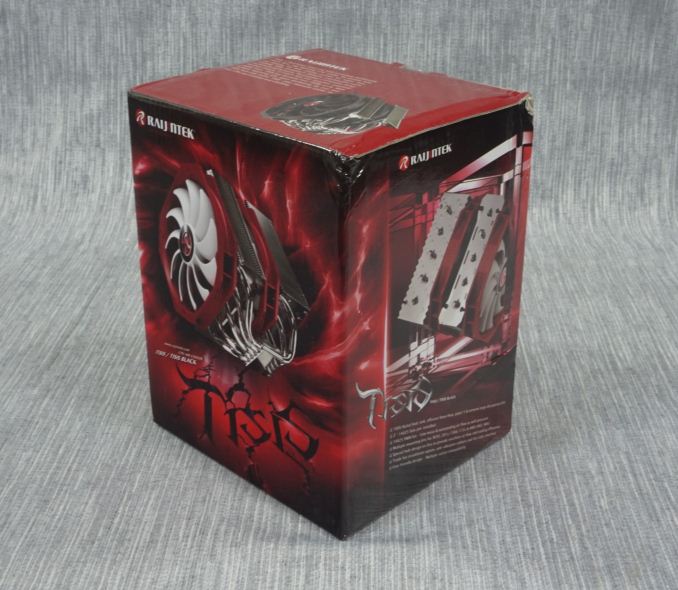
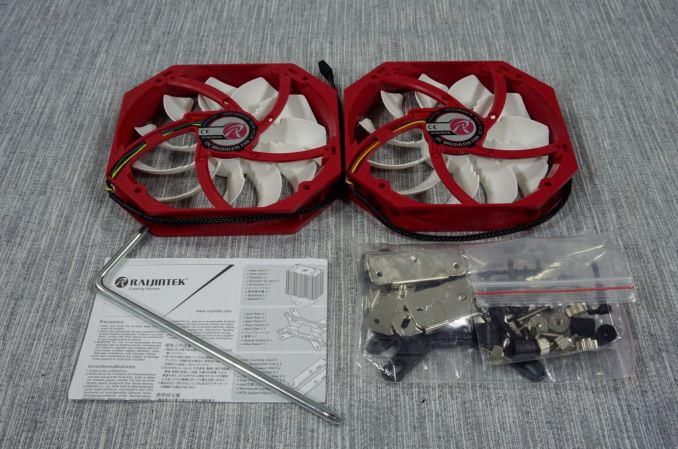
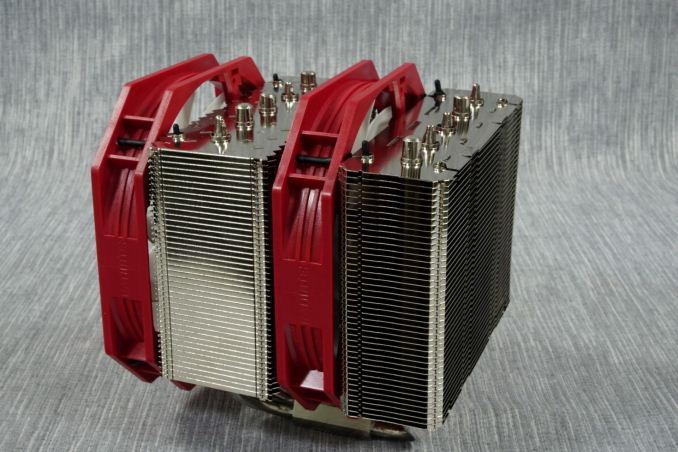
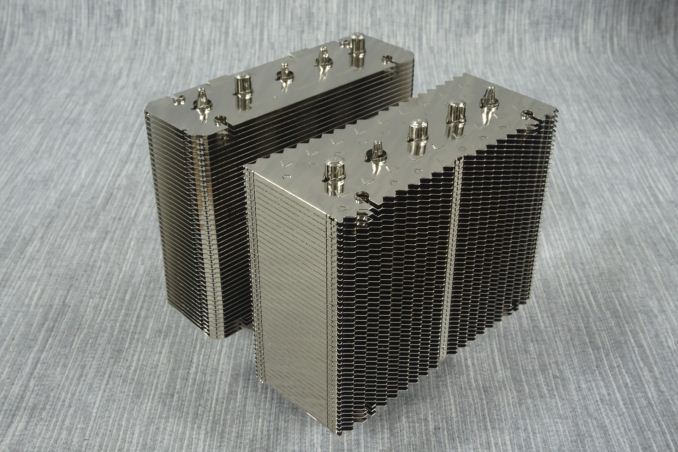
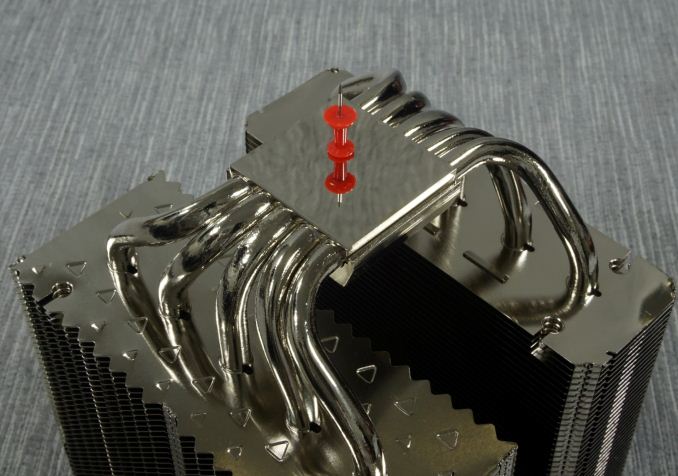








135 Comments
View All Comments
kraznal - Thursday, July 16, 2015 - link
LOL - "Liquid-based cooling solutions are becoming easier to install and AIO kits generally are hassle-free, yet they are still not favored by the majority of the users. Their space requirements, increased complexity and price hold most people to simple air-based cooling solutions."so they become easier to install, hassle-free but somehow managed to keep their complexity? what are talking about??? :)
anyway, I am sure you know this and you just overlooked this fact to support your own story, liquid cooling sets are NOT more expensive (Corsair H50 costs $60 shipped), are NOT bigger (H50 compared to any of the air coolers here for example), and are NOT complex (whatever you mean by that), or even the noise factor where air coolers need to run on higher RPMs to achieve same cooling effectiveness as liquid coolers - simply there is no comparison between liquid solution and air solution. Cheap Corsair H50 is far superior in every way than those colossal monstrosities you are reviewing here now. Smart user would never chose an air cooler simply because it doesn't make sense to chose an old and less effective idea.
Therefore please do not spread bullshit just so you can cash a check for an article.
rleigh - Saturday, July 25, 2015 - link
Liquid cooling doesn't always work well. I got a Corsair H60 to put in a Corsair Obsidian case with an ASUS Sabertooth R2.0 mainboard and an AMD FX8350 processor. It worked brilliantly with CPU temperature at ~35C under load. Unfortuately, the layout of the case and lack of airflow around the CPU heatsink lead to the VRMs/MOSFETS around the CPU reaching temperatures of over 85C, no matter how I arranged the case fans. I replaced it with a Noctua cooler similar to this one which also kept the CPU nice and cool, but with the side effect of the large 14mm fans producing sufficient airflow onto the mainboard to eliminate the dead space which caused overheating.This isn't to say that closed loop coolers are bad; their performance can be very good. But they aren't compatible with every case/mainboard.
kraznal - Wednesday, August 5, 2015 - link
First: it's been almost a month - E. Fylladitakis - must be on vacations since he has yet to reply to my comments.Second: rleigh - very sorry to hear that you had to install additional cooling for your motherboard. It is best to keep high air flow inside the case, if you didn't provide that then no wonder you had an overheating problem.
Cvengr - Friday, December 25, 2015 - link
http://serverfault.com/questions/263931/why-datace...Here's an interesting link regarding the use of water cooling in data centers (limited to air cooling). Primary issue is safety.
alexbagi - Monday, March 7, 2016 - link
Good picks. I'd also suggest looking at http://www.144hzmonitors.com/cpu-cooler-buyers-gui... for guidance.I am going with the 110i myself, as I need water cooling.